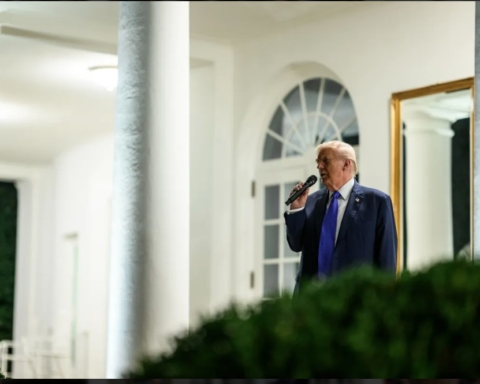During a difficult period for the transatlantic relationship, Asia policy is one of the rare areas where the United States and the European Union have found new ways to cooperate more closely, despite their differences elsewhere.
This fact is far from obvious, even to many informed observers. The Trump administration’s willingness to hit and threaten allies with tariffs; European concerns about a “new Cold War” strand in U.S. China policy; and wider divergences over issues ranging from climate change to Iran have undoubtedly had a detrimental impact on the two sides’ willingness and capacity to coordinate their approaches.
Yet despite a number of these self-imposed obstacles, Europe is now of greater salience to the United States’ Asia policy than it was over the last decade. When its competition with China was predominantly focused on military balancing, the United States naturally placed greater emphasis on its Asian treaty allies and security partners. The Chinese military challenge has now been supplemented by wider competition in the realms of trade, economics, technology, and even ideology.
In Europe too, a rethink on China had been taking place for reasons similar to those that drove changes in U.S. policy. These include concerns over the country’s deepening authoritarianism and assertiveness under Xi Jinping and a more acute sense of the risks to Europe’s economic future from China’s domestic economic behavior and geo-economic strategy. The European shift toward a far more skeptical and critical approach was made public in the EU’s Joint Communication issued last March, which labeled China a “systemic rival”, but it was already well underway previously on areas ranging from investment screening to anti- dumping rules.
As a result, U.S. policymakers dealing with China and the Indo-Pacific region more broadly have started to focus more on Europe —the world’s largest market, regulatory power, source of outbound investment and development aid, and hub for many key technologies and components. The EU is a potential force multiplier and a source of additional leverage in some areas for the United States, from infrastructure finance to joint actions on Chinese economic practices. In others, such as investment screening and export controls, cooperation with Europe is a precondition for the effectiveness of U.S. policy.
Practical progress in these areas has varied considerably. The trade agenda has still been held hostage to U.S. tariffs, and threats of tariffs, on the EU itself, as well as divergences over the future of the WTO. The exchanges on 5G have been a cautionary case study in the challenges of dealing with an issue that cuts across economics, technology, values, and security. Both sides still need to resolve— internally and with each other—the right balance to strike in the openness of their economic, technological, and scientific interactions with China.
Yet in the years ahead, that agenda is only likely to widen further. While cooperation in the broader Indo-Pacific will be a major geographic focus, adjustments around China’s rise touch on an even more expansive array of domestic policies too. There are, for instance, parallel debates in Europe and the United States over how the array of challenges that China poses should recondition their broader economic strategy, and the capacity of the major democracies to continue to set global rules and standards. Despite the deeply interconnected nature of the transatlantic economy and security alliance, most of the debates about industrial policy, supply-chain security, the defense industrial base, and other related areas are conducted on separate tracks, and transatlantic exchanges in these areas have in some aspects even regressed.
Given the impact of U.S. economic pressure on fronts ranging from Iran-related secondary sanctions to national- security-based tariffs on steel, the impetus in the EU is understandably directed more toward building “strategic autonomy” than on seeking transatlantic convergence. Yet the scale of the differences between the essential elements of the liberal-democratic model and the authoritarian one that the Chinese government is increasingly promoting, from surveillance to the role of the party-state in the economy, is clear.
In the coming years, if the United States really wants to make competition with China a central element of its strategy, that will certainly require a far more serious effort to get partners and allies on board. Yet Europe too will need deeper reflection on what its own changing analysis of China really implies.
Despite the language around “systemic” competition and rivalry, and a demonstrably tougher approach to recent negotiations, the instinct among many European actors is still to default to a path of least resistance in their China policies. European countries will have to undertake a more serious reckoning on what short-term costs they are willing to bear if they want their values and interests to prevail. Competition with China is not going to be pain-free.




